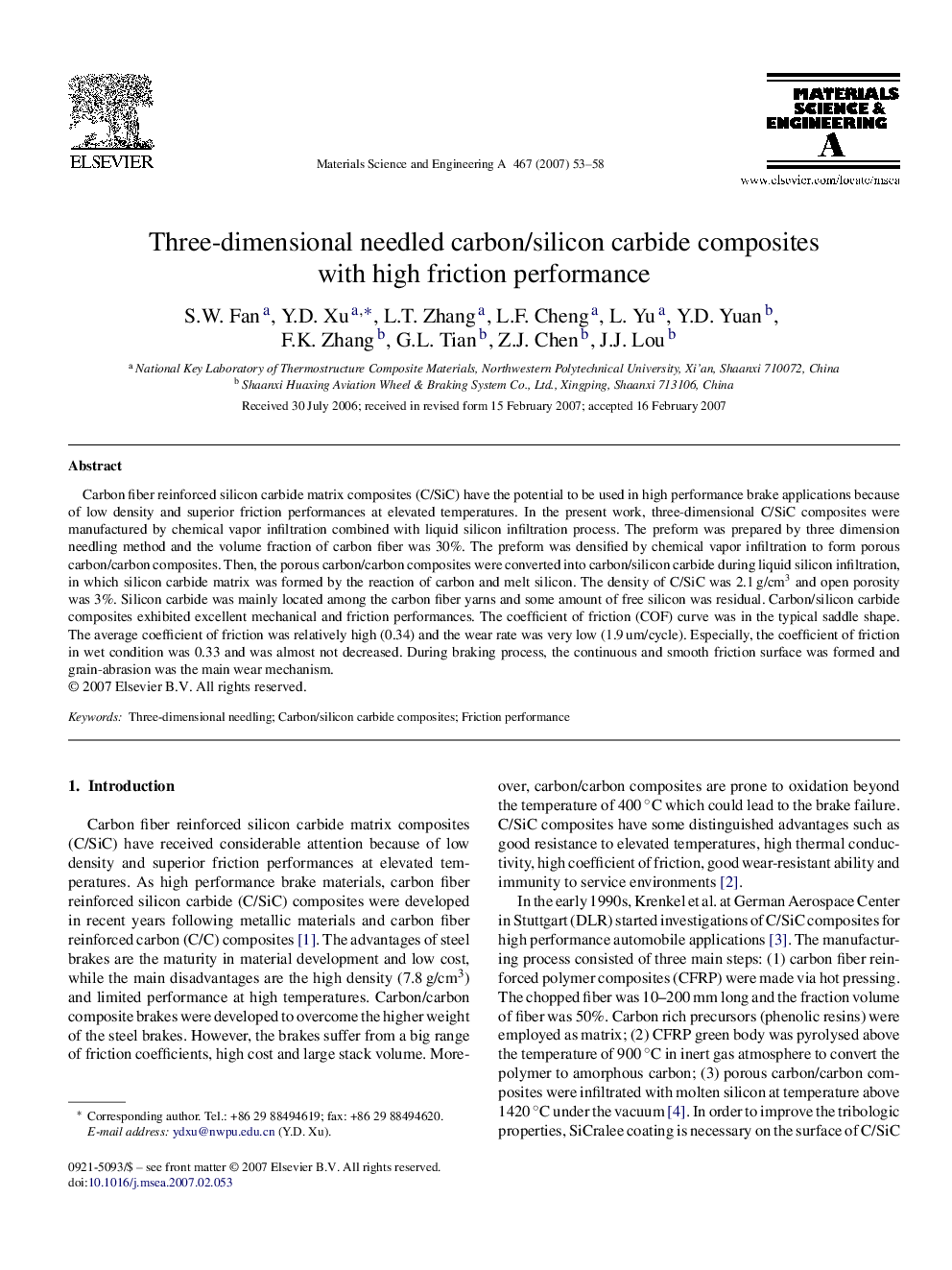| Article ID | Journal | Published Year | Pages | File Type |
|---|---|---|---|---|
| 1583462 | Materials Science and Engineering: A | 2007 | 6 Pages |
Abstract
Carbon fiber reinforced silicon carbide matrix composites (C/SiC) have the potential to be used in high performance brake applications because of low density and superior friction performances at elevated temperatures. In the present work, three-dimensional C/SiC composites were manufactured by chemical vapor infiltration combined with liquid silicon infiltration process. The preform was prepared by three dimension needling method and the volume fraction of carbon fiber was 30%. The preform was densified by chemical vapor infiltration to form porous carbon/carbon composites. Then, the porous carbon/carbon composites were converted into carbon/silicon carbide during liquid silicon infiltration, in which silicon carbide matrix was formed by the reaction of carbon and melt silicon. The density of C/SiC was 2.1Â g/cm3 and open porosity was 3%. Silicon carbide was mainly located among the carbon fiber yarns and some amount of free silicon was residual. Carbon/silicon carbide composites exhibited excellent mechanical and friction performances. The coefficient of friction (COF) curve was in the typical saddle shape. The average coefficient of friction was relatively high (0.34) and the wear rate was very low (1.9Â um/cycle). Especially, the coefficient of friction in wet condition was 0.33 and was almost not decreased. During braking process, the continuous and smooth friction surface was formed and grain-abrasion was the main wear mechanism.
Related Topics
Physical Sciences and Engineering
Materials Science
Materials Science (General)
Authors
S.W. Fan, Y.D. Xu, L.T. Zhang, L.F. Cheng, L. Yu, Y.D. Yuan, F.K. Zhang, G.L. Tian, Z.J. Chen, J.J. Lou,
